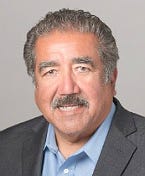Windstream Stuns Industry, Channel, Files Bankruptcy in 'Offensive Move'
The business communications giant hopes to emerge a stronger company.

After losing its court battle against Aurelius Capital Management, Windstream has filed for chapter 11 bankruptcy protection.
On Feb. 15, the U.S. District Court of the Southern District of New York ruled in favor of Aurelius, a Windstream bondholder, saying the communication giant’s 2015 spinoff of copper and fiber assets into the Uniti Group real estate investment trust (REIT) breached their contract.
The court ruled that Aurelius is entitled to a money judgment of nearly $310.5 million, plus interest after July 23, 2018.
Windstream has about $5.8 billion in outstanding bonds and loans.

Ovum’s Mike Sapien
Mike Sapien, Ovum’s vice president and chief analyst of enterprise services, said when deciding to file for bankruptcy, it’s “best to move first before the creditors force it upon you.”
“So Windstream [made] an offensive move to avoid potential reactive moves forced by creditors/bondholders,” he said. “Windstream did not have much choice given their current situation and having other bondholders.”
Windstream “clearly miscalculated” the risks of its earlier move to split the company and create its REIT a few years ago, Sapien said. Fortunately most telcos avoided this move and kept their telecom assets within their company, he said.
David Avery, Windstream’s vice president of corporate affairs, tells Channel Partners his company has sufficient liquidity to run its business throughout the court-supervised process. Windstream also has received a commitment for $1 billion in new financing from Citigroup Global Markets, he said.

Windstream’s David Avery
“Following court approval, which we expect in the next couple of days, this financing, combined with cash generated by the company’s ongoing operations, will be available to ensure we continue operating as usual,” he said. “Our partnership with channel partners is very important to us and we are committed to ensuring all customers realize the maximum benefit in transitioning to next-generation technology solutions and premium broadband services. While we may not have all of the answers today, we are committed to keeping our channel partners informed throughout this process as there are updates to share.”
Windstream said it plans to use the court-supervised process to address “debt maturities that have been accelerated as a result of the recent decision by Judge Jesse Furman.”
“Following a comprehensive review of our options, including an appeal, the board of directors and management team determined that filing for voluntary chapter 11 protection is a necessary step to address the financial impact of Judge Furman’s decision and the impact it would have on consumers and businesses across the states in which we operate,” said Tony Thomas, Windstream’s president and CEO. “Taking this proactive step will ensure that Windstream has access to the capital and resources we need to continue building on Windstream’s strong operational momentum while we engage in constructive discussions with our creditors regarding the terms of a consensual plan of reorganization.”
Windstream’s leadership “acted decisively to secure the long-term financial stability of the company, and “we are confident that, upon completion of the reorganization process, we will be even better positioned to invest in our business, expand our speed and capabilities for our customers and compete for the long term,” Thomas said.
In conjunction with the filing, Windstream said it has filed a number of customary first day motions. These motions will allow it to continue to operate in the normal course of business without interruption or disruption to its relationships with its customers, vendors, channel partners and employees. The company expects to receive court approval for these requests and intends to …
… pay vendors in full for all goods received and services provided to Windstream after the filing date, it said.
“Windstream did not arrive in chapter 11 due to operational failures and currently does not anticipate the need to restructure material operations,” Thomas said. “While it is unfortunate that Aurelius engaged in these tactics to advance its returns at the expense of Windstream, we look forward to working through the financial restructuring process to secure a sustainable capital structure so we can maintain our strong operational performance and continue serving our customers for many years to come.”
Windstream will be on a tight budget for some time as it goes through the bankruptcy process so the employees will be tested as they have to do more with less and maintain overall customer satisfaction while going through this process, Sapien said. Most customers will not see any changes from the bankruptcy, he said.
Based on Windstream having a “strong business model,” there will be some negotiations with major creditors and bondholders (benefactors) now to keep the company going without adding excessive financial pressure or demands, he said.
“These negotiations will take years to settle out, and Windstream management and major creditors and bondholders will be the ones spending all the time, legal fees and accountants to settle this all in the coming years,” Sapien said. “It will [be a] difficult, long process for all involved in these negotiations. Typically, the winners are the lawyers who eventually help negotiate and document the final settlements.”
Given the regulatory involvement for some of Windstream’s franchise areas, current revenue stream and overall business opportunity, the process will be long but “I would expect Windstream to come out stronger in the end,” he said.
Read more about:
AgentsAbout the Author
You May Also Like


